Abstract
Methyl bromide (MeBr) has broad microbicidal activity, but its use as a disinfectant for food is limited by the resulting bromide residues. Increasing the MeBr concentration, exposure temperature, or exposure period of a treatment tended to increase both the microbicidal efficacy of MeBr and the bromide residues. Its sporicidal activity was less at high than at low relative humidity within the range of 20 to 99%. Both the efficacy and the resulting residues of a MeBr treatment varied inversely with the load of product in a fumigation chamber due to sorption of the fumigant. Fumigation tests with almond kernels inoculated with Escherichia coli or Salmonella typhimurium indicated that MeBr can be used to disinfect whole nut kernels without resulting in excessive bromide residues, although the MeBr level necessary is higher than that normally used for insect control.
Full text
PDF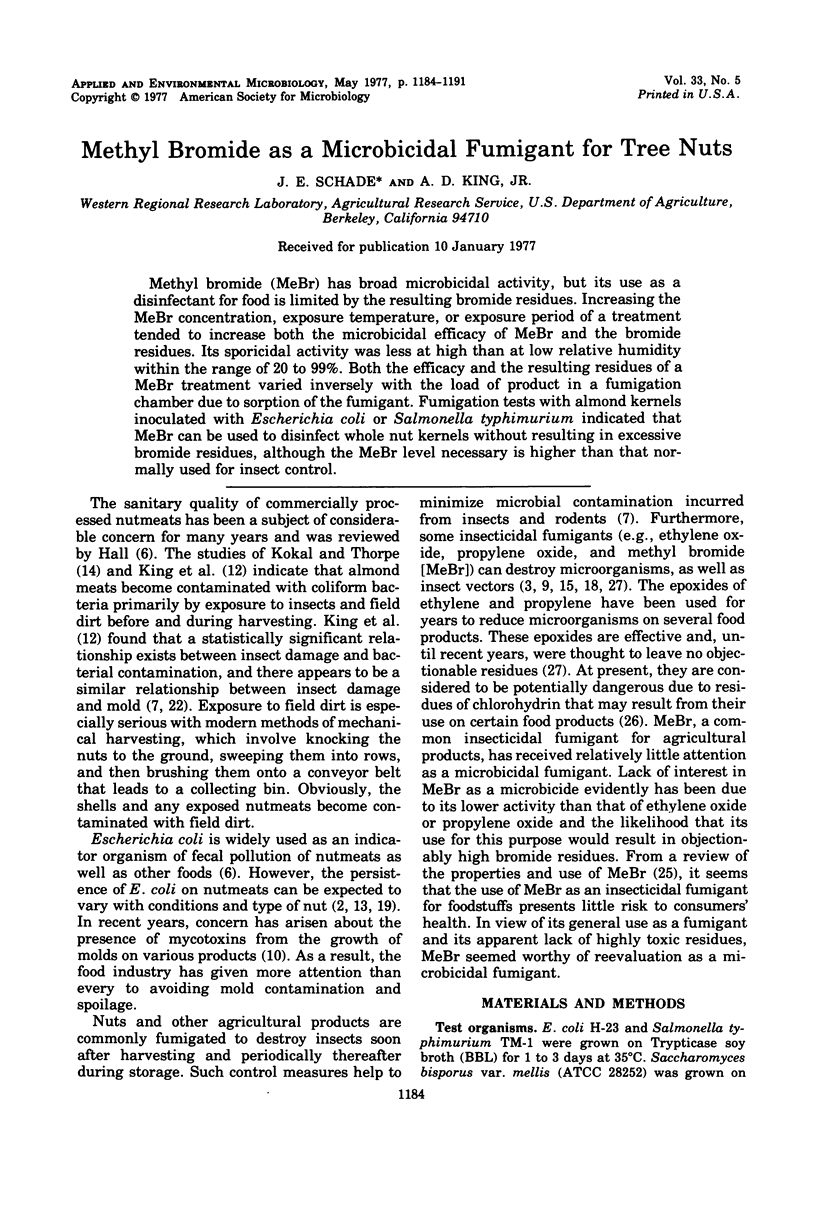
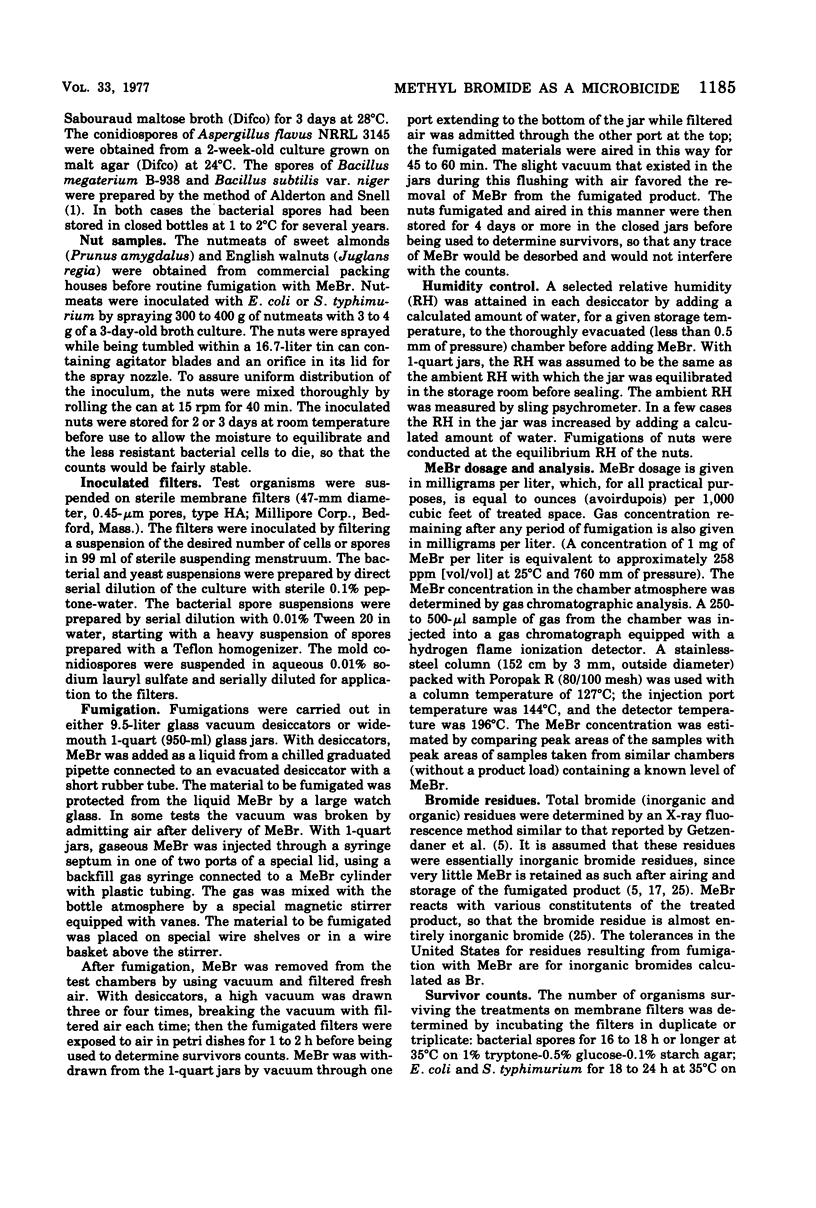
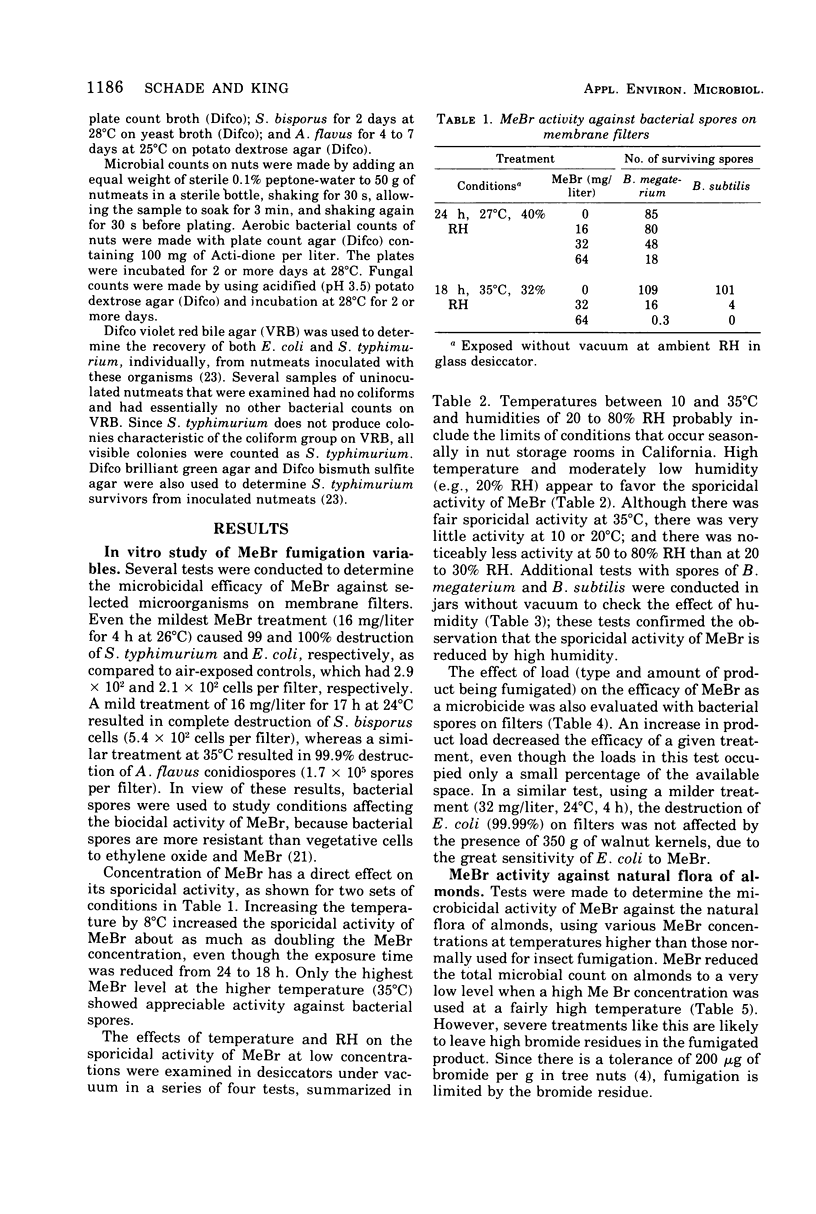
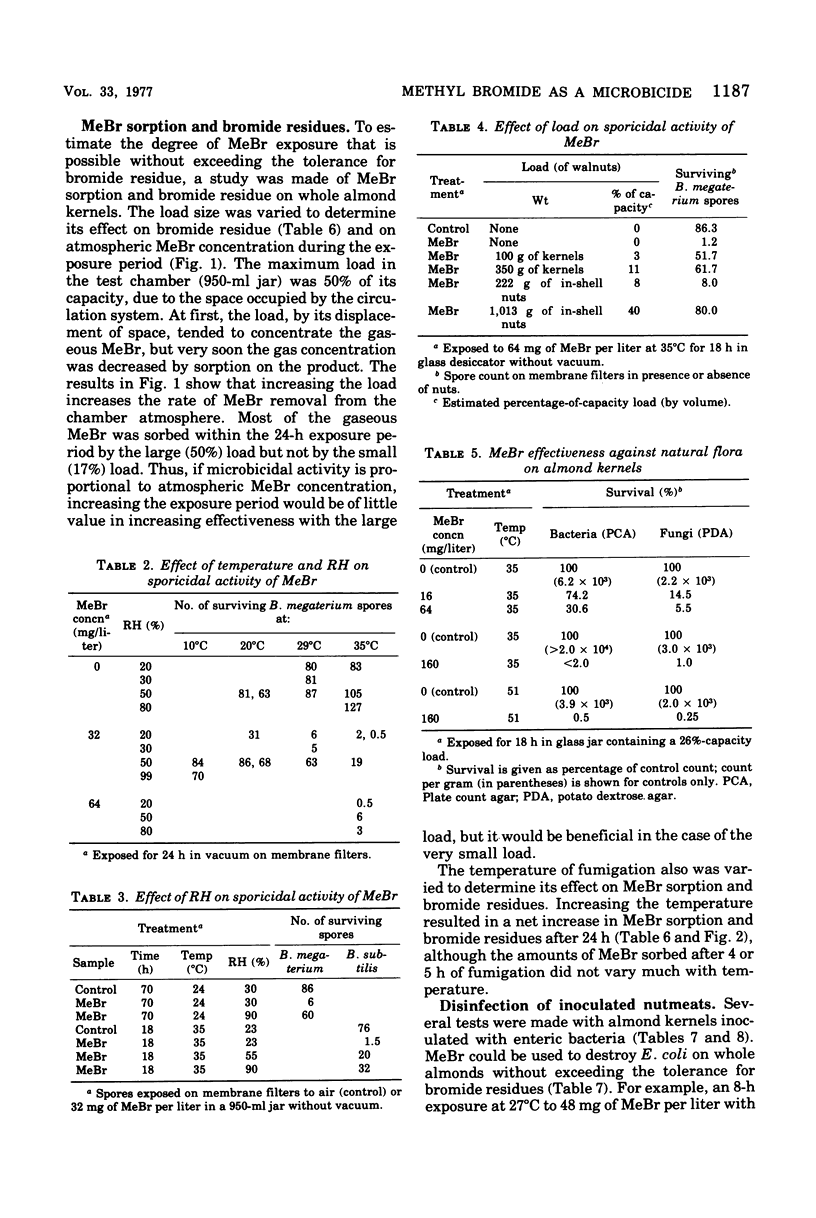
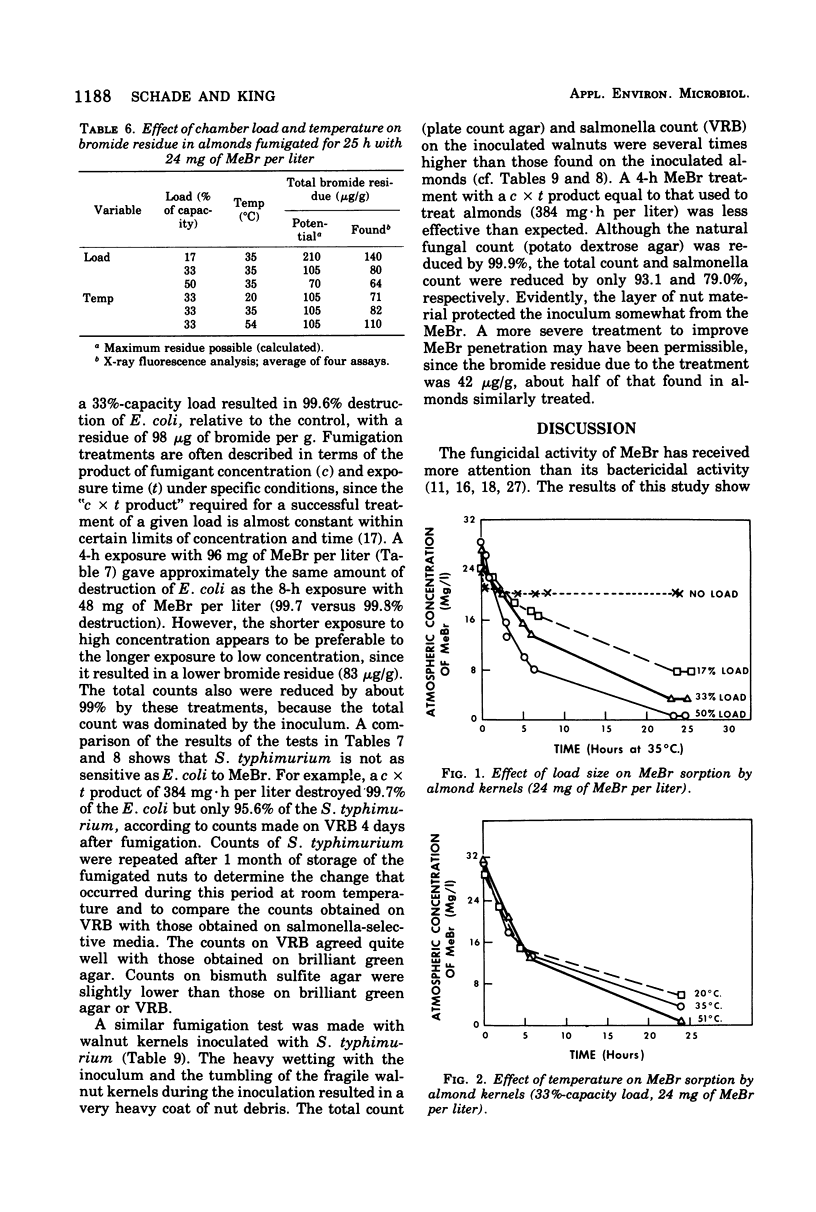
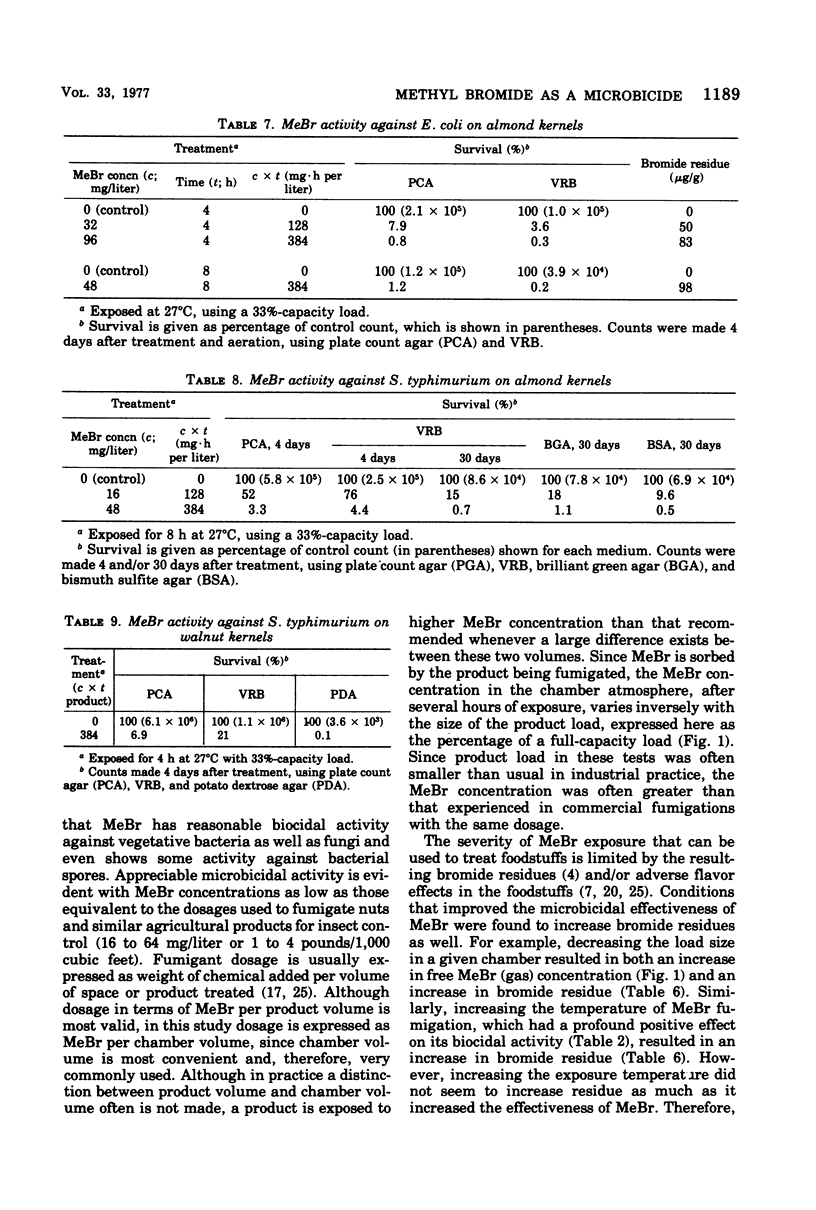
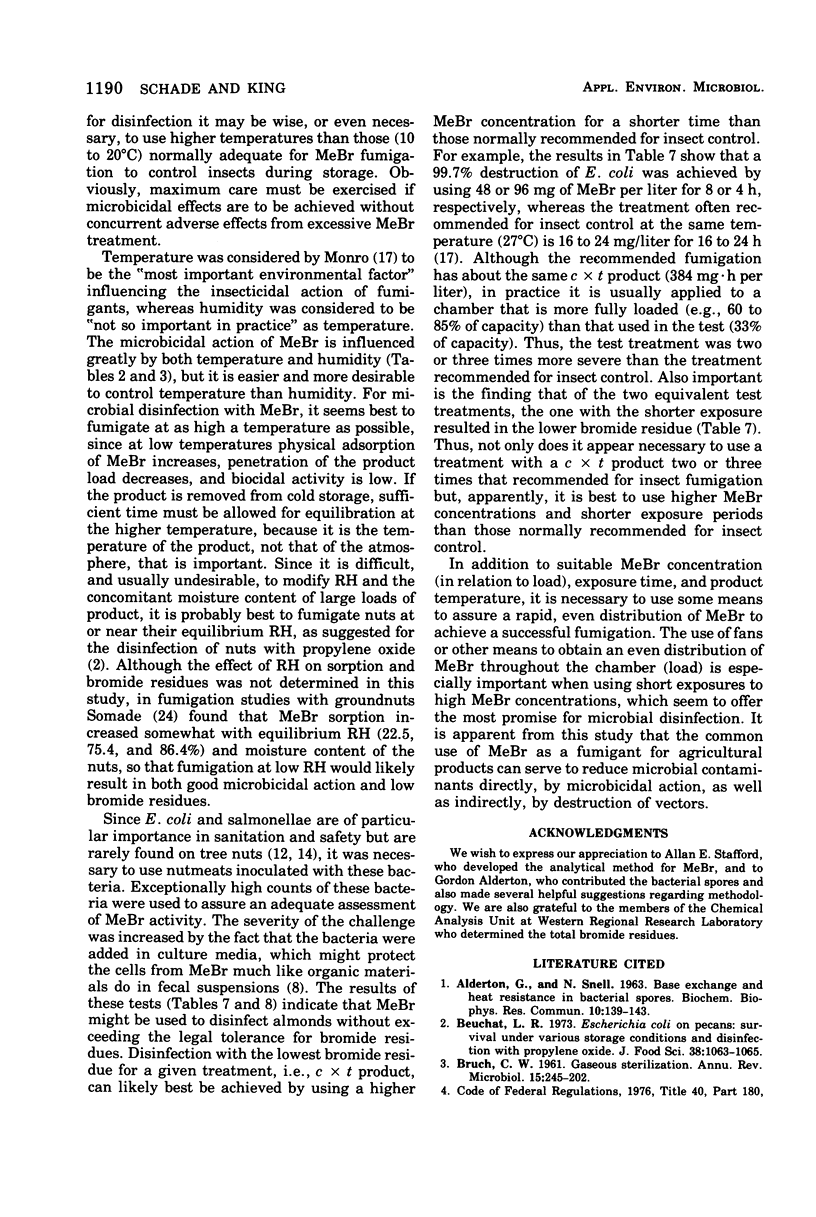
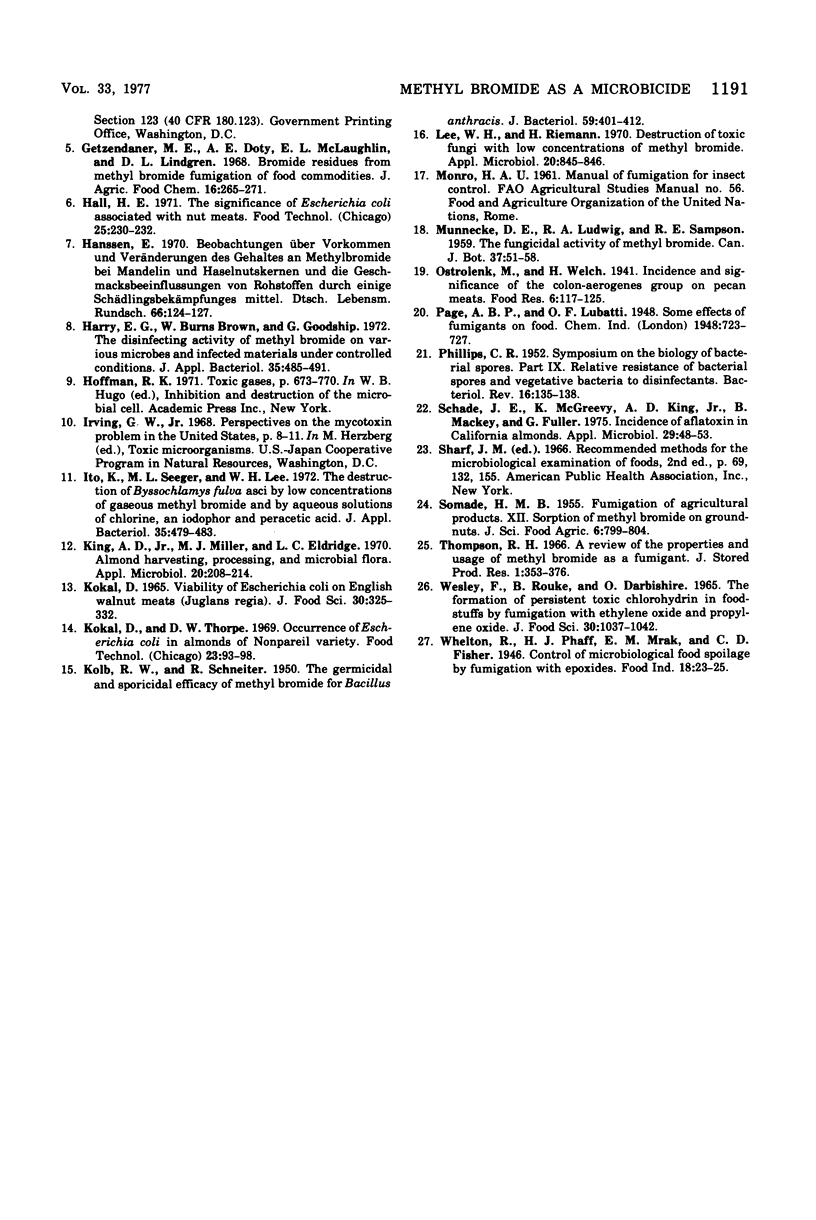
Selected References
These references are in PubMed. This may not be the complete list of references from this article.
- ALDERTON G., SNELL N. Base exchange and heat resistance in bacterial spores. Biochem Biophys Res Commun. 1963 Jan 31;10:139–143. doi: 10.1016/0006-291x(63)90039-1. [DOI] [PubMed] [Google Scholar]
- Harry E. G., Brown W. B., Goodship G. The disinfecting activity of methyl bromide on various microbes and infected materials under controlled conditions. J Appl Bacteriol. 1972 Sep;35(3):485–491. doi: 10.1111/j.1365-2672.1972.tb03726.x. [DOI] [PubMed] [Google Scholar]
- Ito K. A., Seeger M. L., Lee W. H. The destruction of Byssochlamys fulva asci by low concentrations of gaseous methyl bromide and by aqueous solutions of chlorine, an iodophor and peracetic acid. J Appl Bacteriol. 1972 Sep;35(3):479–483. doi: 10.1111/j.1365-2672.1972.tb03725.x. [DOI] [PubMed] [Google Scholar]
- KOLB R. W., SCHNEITER R. The germicidal and sporicidal efficacy of methyl bromide for Bacillus anthracis. J Bacteriol. 1950 Mar;59(3):401–412. doi: 10.1128/jb.59.3.401-412.1950. [DOI] [PMC free article] [PubMed] [Google Scholar]
- King A. D., Jr, Miller M. J., Eldridge L. C. Almond harvesting, processing, and microbial flora. Appl Microbiol. 1970 Aug;20(2):208–214. doi: 10.1128/am.20.2.208-214.1970. [DOI] [PMC free article] [PubMed] [Google Scholar]
- Lee W. H., Riemann H. Destruction of toxic fungi with low concentrations of methyl bromide. Appl Microbiol. 1970 Nov;20(5):845–846. doi: 10.1128/am.20.5.845-846.1970. [DOI] [PMC free article] [PubMed] [Google Scholar]
- Schade J. E., McGreevy K., King A. D., Jr, Mackey B., Fuller G. Incidence of aflatoxin in California almonds. Appl Microbiol. 1975 Jan;29(1):48–53. doi: 10.1128/am.29.1.48-53.1975. [DOI] [PMC free article] [PubMed] [Google Scholar]


